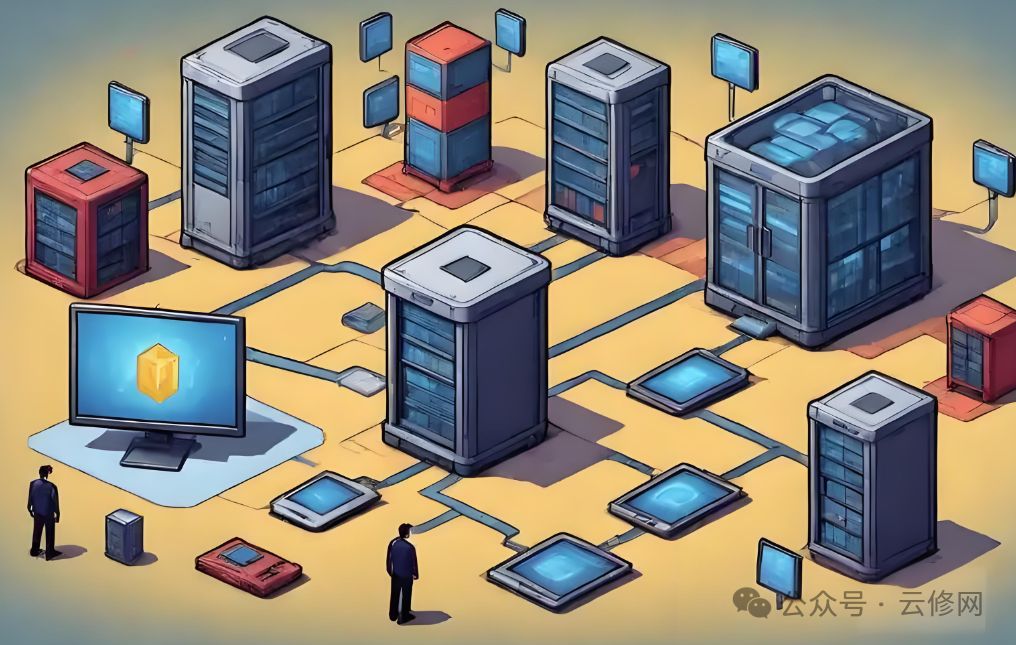
Server Virtualization: The Super “Magician” of Hardware Resources
Server virtualization is regarded as the “pioneer” of virtualization technology. Imagine you have a powerful physical server, akin to a luxurious building, but many rooms (hardware resources) within that building may often remain idle, leading to significant waste. Server virtualization technology is like a “magician” that maximizes the utilization of building space.
It achieves this by installing a layer of virtualization software (such as VMware ESXi, KVM, etc.) on top of the physical server’s hardware. This layer of software acts like an intelligent “butler,” uniformly allocating and managing the server’s CPU, memory, storage, and network resources. It can virtualize a single physical server into multiple isolated small servers, known as virtual machines (VMs). Each virtual machine has its own independent operating system and applications, just like each room in the same building being transformed into an independent apartment, running separately without interference.
Enterprises adopting server virtualization technology enjoy countless benefits. On one hand, it significantly increases the utilization rate of hardware resources, allowing previously idle resources to be put to good use, saving costs on purchasing new servers. On the other hand, the creation, migration, and management of virtual machines are very convenient. When business volume suddenly increases, new virtual machines can be quickly created to cope; conversely, when business volume decreases, excess virtual machines can be easily shut down, providing flexibility and efficiency. Moreover, virtual machines are isolated from each other, so even if one virtual machine fails, it will not affect the normal operation of other virtual machines, greatly enhancing system stability and reliability.
Operating System Virtualization: The “Doppelgänger” Technique at the System Level
Operating system virtualization is another unique form of virtualization that primarily focuses on the operating system level. In this virtualization model, the operating system itself has the capability to create multiple isolated user space instances, known as containers.
Unlike server virtualization, where each virtual machine has its own independent operating system kernel, the containers in operating system virtualization share the same operating system kernel. This is akin to an apartment building where all tenants share the building’s infrastructure (operating system kernel), but each tenant has their own independent room (container), where they can freely arrange and use their own items (applications and data).
The representative of container technology, Docker, has become immensely popular worldwide in recent years. It makes packaging, distributing, and deploying applications simpler than ever. Developers can package applications and their dependencies into a container image, which acts like a “universal package” that can run quickly in any environment—development, testing, or production—as long as there is a Docker environment, truly achieving “build once, run anywhere.” This not only greatly improves development and operations efficiency but also reduces the probability of errors during the application deployment process. Additionally, since containers share the operating system kernel, they occupy very little resources and start up extremely quickly, allowing more application instances to run on the same physical server compared to traditional virtual machines, further enhancing resource utilization.
Service Virtualization: The “Virtual Stand-in” for Real Services
During software development and testing, developers often encounter issues where dependent external services are not yet completed, or external services are unstable and slow to respond, hindering development and testing work. This is where service virtualization comes into play, acting as a “virtual stand-in” for real services.
Service virtualization simulates the interfaces and behaviors of real services, providing developers and testers with a virtual service environment. For example, when developing an e-commerce system, it is necessary to call a third-party payment interface for testing payment functionality, but the third-party payment interface may still be under development or testing costs may be high. In this case, service virtualization tools (such as SoapUI, MockServer, etc.) can be used to create a simulated payment interface that can receive and process requests identical to those of the real payment interface and return expected response results, just as if a real payment operation were taking place.
Service virtualization not only accelerates the speed of development and testing but also reduces testing costs. Since there is no longer a need to rely on real external services, it avoids interruptions and delays in testing caused by external service issues. Furthermore, by finely controlling virtual services, various complex business scenarios and exceptional situations can be simulated, thoroughly testing the stability and robustness of applications. For instance, it can simulate scenarios where the payment interface returns payment failures or network timeouts to test how the e-commerce system responds in these situations.
Although server virtualization, operating system virtualization, and service virtualization each have their own focus, they collectively form a powerful virtualization ecosystem. Server virtualization provides foundational support at the hardware resource level, operating system virtualization achieves efficient resource utilization and application isolation at the system level, and service virtualization offers convenient environment simulation for software development and testing.